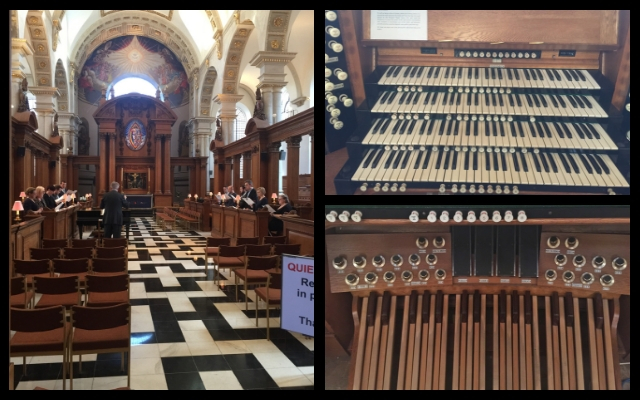For the second time in recent years we are providing a hire instrument for the magnificent St Bride’s Church in London. Last time the pipe organ was decommissioned while the church was redecorated. This occasion is far more serious as the Compton pipe organ is now silent following a massive lightening strike that destroyed quite substantial parts of the church and organ electrical systems.
We may be in for quite a long term hire period though of course we hope this will not be the case.
A London ‘Church Gem’
St Bride’s is one of Christopher Wren’s London ‘Church Gems’ and it was substantially damaged in world war II. Today St Bride’s exists as an historically accurate as possible rebuild with the interior layout returned to its original Wren form. Box pews that had faced East were replaced with seating running along the east west axis facing each other looking into the nave.
The current organ dates from 1957 and is somewhat controversially hidden from view in chambers to the north and south of the tower. The positif division is placed centrally in the tower so no pipework at all is visible. Was this then part of the drive to recreate the atmosphere of Wren’s original scheme?
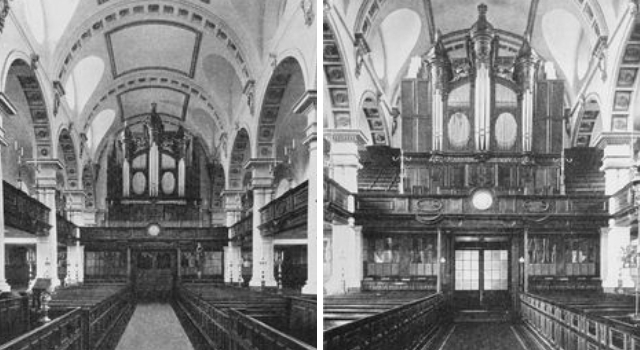
As you can see in the pictures above before the bomb damage an organ sat conventionally in a west end wall case. Those of us familiar with organ music will probably confirm that there is a sense of expectation every time we visit a church to wonder about what impact the organ case will make on the visitor and from that impact go on to ponder on how it might sound. Both these anticipations are denied the visitor at St Brides and unless you stumble upon the massive console that sits in the south aisle you could be forgiven for thinking that St Brides has no organ at all.
The Compton Organ
The specification as well as console are truly huge. You will find the detail on the NPOR site here.
But as with many Compton organs this is an instrument that tries to get a quart out of a pint pot deploying a huge degree of borrowing to create what are at the console apparently independent ranks. Note also another Compton trade mark with this instrument. An ‘enclosed’ Great which I am sure is extraordinarily useful to provide the excellent St Bride’s choir with the most detailed and elegant accompaniment.
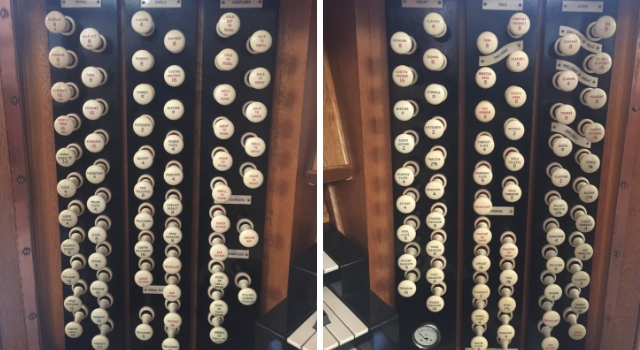
Actually, any writing about St Bride’s would be incomplete if the very high standard of the choir there were not brought to the readers attention. While I can wax lyrical about organs and their music almost without end, I have to accept that the beauty of ‘A Capella’ singing reaches a whole new level of emotional intensity and the St Bride’s choir are masters of the art. Were it not for the need of congregational singing I would guess that St Bride’s would be one of the churches around the UK that could very easily get on without an organ at all!
Visiting the Carol Service
My visit in December was to listen to our Regent 356 instrument in use at a Carol Service and help organist Matthew Morley work out if sound levels around the building were adequate. So while this service progressed a great many must have wondered what this grey haired gentleman was doing wandering about while the carols were sung. Not paying too much attention to the service in progress.
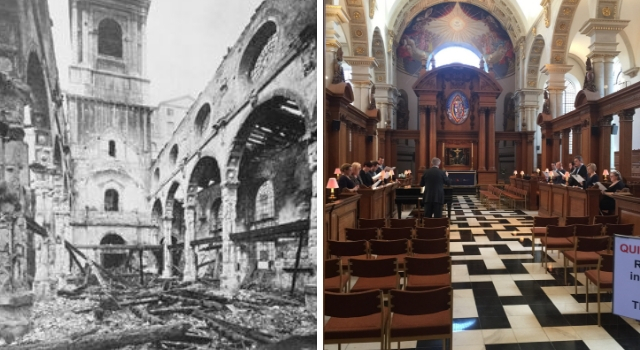
Our speaker system sits behind a balcony dead centre of the west end wall in a very concentrated space so not the optimal location from which to get a good spread of sound. In fact the results about the building were very even except ironically around the organ console where the sound levels seemed noticeably lower. This may have contributed to Matthew’s impression that the overall level needed increasing.
Discussion turned to Debate
So the afternoons work was concentrated on evening out volume levels across the ranks. Every building has its own ‘resonant frequency’. At St Bride’s this is bottom A and since adding a bass sub-woofer in recent weeks the irritation of this bump in sound volume had increased. With individual note volume controls for each stop it is relatively easy to get good balance and after a while discussion with Matthew turned to debate as to whether leaving some ‘bumps’ about the place actually gave rise to a more realistic instrument. I don’t want to start off too much of a debate but I guess it will be in the size of the bumps!
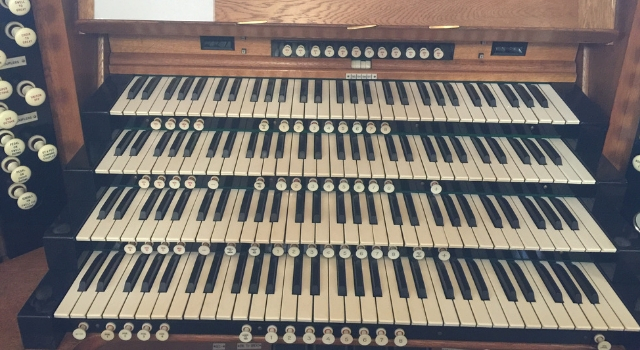
After a couple of hours work the dominance of bottom A coming mainly from pedal ranks had been tempered and time was available to explore some new voice models available since this instrument was installed. We found a much more ‘French’ Vox Humana and replaced the Clarinet with a Krumhorn more appropriate for use as a choir solo reed.
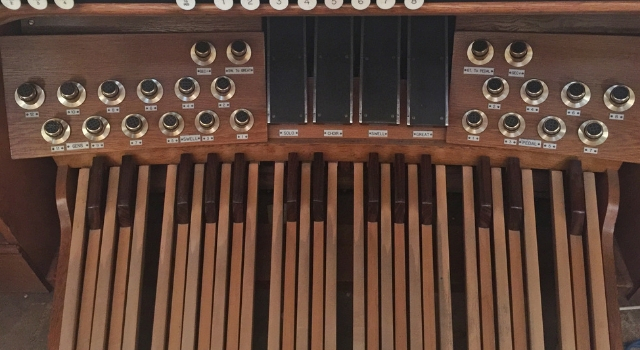
It is interesting how this work of regulation can be a very iterative process. Often it is not until some stops are used in combination that volume levels of individual notes really stand out as irregular. Going back to the individual note then confirms a difference that was nowhere like so apparent as when the voice was regulated on its own.
Now I would not pretend in any way to be experienced in voicing but I have noticed this with my home instrument when playing a certain piece with a solo line reveals a very overly loud or soft note in a way that it is not heard when just considered against adjacent notes of the same rank. I wonder what is going on in the brains processing of sound that allows these differences to be far more obvious when set in a different context, a point that Matthew listening with me had also experienced.
What does the future hold?
So it now remains to be seen what form of work is commissioned for the pipe organ. The electrical repairs required are substantial and since it is at least 30 years since work was last carried out the usual dilemma faces the instrument. Do the bare minimum and hope all else keeps going or bite on what will undoubtedly be a very substantial bullet and while the instrument is apart fix all other ills that are evident to one degree or another.
What is certain is that the lightening strike while having caused great damage to electrical systems, St Brides saw far worse in the war as the pictures show. St Bride’s has proved its resilience and holds a cherished place in the musical world of London. I am confident that a mighty pipe organ will once again bless this church with its music. Will it be a repaired Compton or a bolder scheme that embraces all the new technologies now available? A combination organ perhaps or include a midi linked single manual in the nave that allows the Director of Music to accompany as well as direct if an organist is not available?
Whatever to final plan I am sure it will be well worth the wait.
* Images from https://www.british-history.ac.uk/survey-london/bk15/plate-34 and https://www.british-history.ac.uk/survey-london/bk15/plate-35
** Image from https://www.british-history.ac.uk/survey-london/bk15/plate-58
I have had a passion for church organs since the tender age of 12. I own and run Viscount Organs with a close attention to the detail that musicians appreciate; and a clear understanding of the benefits of digital technology and keeping to the traditional and emotional elements of organ playing.
